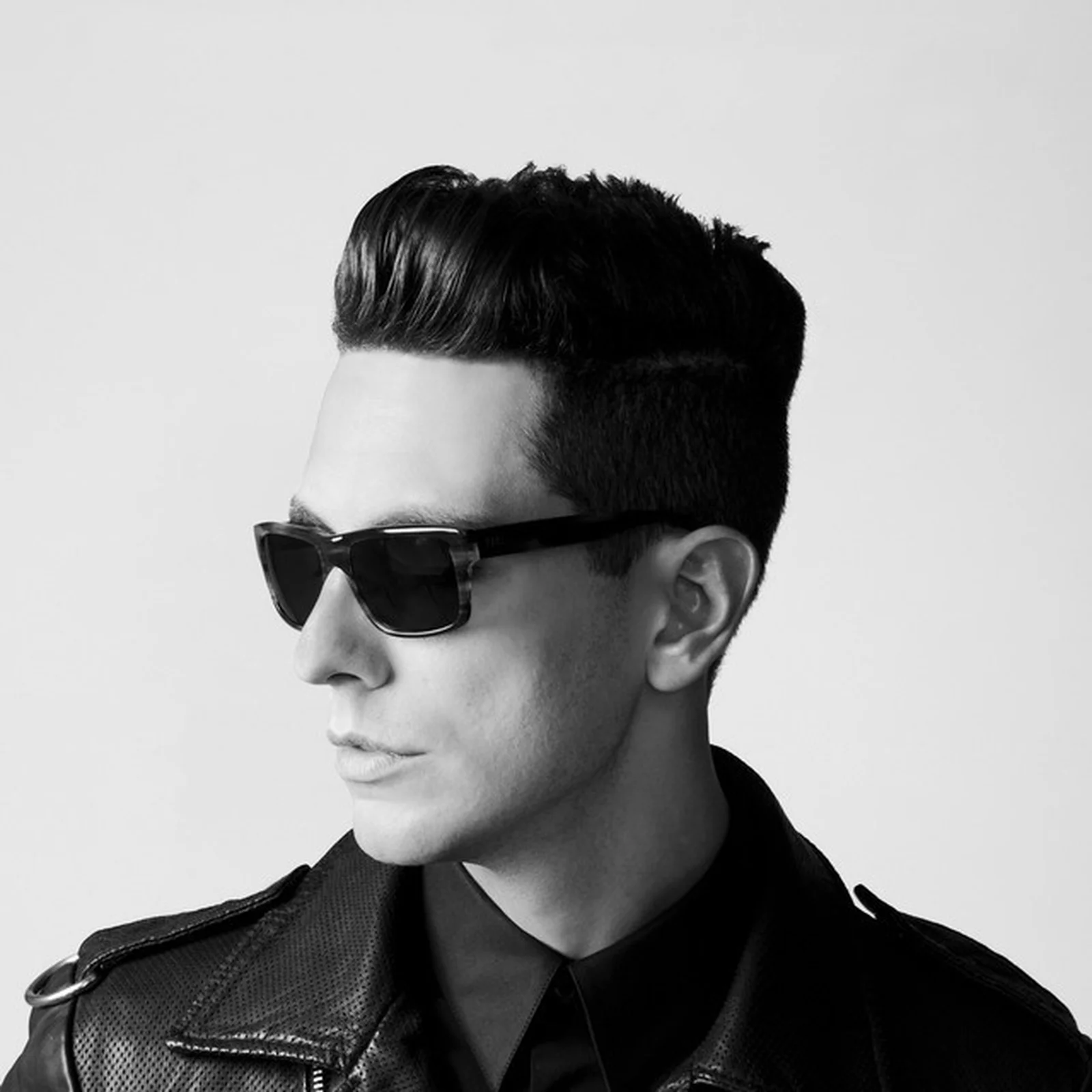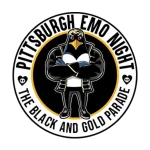Cobra Starship emerged in the mid-2000s as a vibrant and eclectic force in popular music, masterfully blending elements of synth-pop, pop-punk, and dance-rock. Led by the charismatic Gabe Saporta, the band carved a unique niche with their infectious hooks, witty lyricism, and a neon-drenched aesthetic that captured the zeitgeist of the late 2000s and early 2010s. Their journey from a solo side project to a chart-topping international act is a story of creative vision, strategic branding, and an undeniable connection with their audience. This analysis explores the band’s complete trajectory, from their formation and breakthrough to their eventual hiatus and celebrated return, highlighting their lasting relevance in contexts like Emo Night Pittsburgh.
Formation and Early Era
The origins of Cobra Starship are deeply rooted in the emo and pop-punk scene of the early 2000s. The project was conceived by Gabe Saporta, who at the time was the frontman and bassist for the respected New Jersey band Midtown. As Midtown was winding down, Saporta sought a new creative outlet, one that would move beyond the confines of traditional punk rock and embrace a more electronic, dance-oriented sound.
Origins and Formation
In 2005, following a self-described “vision quest” in the Arizona desert, Gabe Saporta conceptualized a new musical entity. This project, which he named Cobra Starship, was envisioned as a departure from the raw, guitar-driven sound of his previous work. Influenced by synth-pop, new wave, and hip-hop, Saporta began writing music that was unabashedly fun, melodic, and designed for the dance floor. He initially gained traction on the burgeoning social media platform Myspace by posting a parody of Gwen Stefani’s “Hollaback Girl” titled “Hollaback Boy,” which quickly went viral and demonstrated his knack for catchy, culturally relevant content. This early buzz caught the attention of Fall Out Boy’s bassist Pete Wentz, a longtime friend, who signed Saporta to his Decaydance Records imprint. The project was initially a solo endeavor, with Saporta writing and recording the majority of the debut album himself.
Early Discography
The first major exposure for Cobra Starship came in 2006 with the song “Snakes on a Plane (Bring It),” created for the soundtrack of the cult classic film of the same name. The track was a supergroup-style collaboration featuring William Beckett of The Academy Is…, Travis McCoy of Gym Class Heroes, and Maja Ivarsson of The Sounds. The song and its accompanying video became an internet phenomenon, perfectly encapsulating the band’s irreverent and pop-culture-savvy identity. This success served as the perfect launchpad for their debut album, While the City Sleeps, We Rule the Streets, released in October 2006. While still largely a solo effort by Saporta, the album established the band’s signature sound: a fusion of electronic beats, rock dynamics, and pop sensibility. To tour the album, Saporta recruited a full-time lineup, solidifying the band with guitarist Ryland Blackinton, bassist Alex Suarez, drummer Nate Novarro, and keytarist Victoria Asher, whose on-stage energy and unique instrument became a visual hallmark of the group.
The Mainstream Breakthrough
With a full band in place and a growing reputation for their high-energy live shows, Cobra Starship was poised for a larger commercial breakthrough. Their second and third albums capitalized on the foundation of their debut, refining their sound and pushing them into the global spotlight.
Pivotal Album(s) and Lineup Changes
The band’s sophomore album, ¡Viva la Cobra!, was released in October 2007. Produced by Patrick Stump of Fall Out Boy, the album demonstrated a more cohesive and polished sound, a direct result of the now-established five-piece lineup working as a collaborative unit. The record was a critical step forward, shedding some of the novelty of the “Snakes on a Plane” era and proving their legitimacy as a creative force in the alternative rock scene. Singles like “The City Is at War” and “Guilty Pleasure” became fan favorites and staples of their live set. The album’s sound solidified their place within the pop-punk and emo-pop landscape, making them a fixture on tours with bands like Fall Out Boy, The All-American Rejects, and Paramore. This period saw no lineup changes, as the core five members built a strong chemistry that would define their most successful era.
Achieving Critical and Commercial Success
The band’s ascent reached its zenith with the release of their third album, Hot Mess, in August 2009. This record marked their definitive crossover into the mainstream. The lead single, “Good Girls Go Bad,” featuring actress Leighton Meester of Gossip Girl fame, was a global smash hit. It peaked at number 7 on the Billboard Hot 100 and became a multi-platinum success, dominating radio airwaves and music television. The album itself debuted at number 4 on the Billboard 200, making it their highest-charting record. Hot Mess was a masterclass in pop production, filled with slick, radio-friendly anthems that retained the band’s characteristic wit and charm. This era cemented Cobra Starship as a household name and a leading act in the wave of pop-punk and synth-pop that defined the late 2000s.
Musical Evolution and Key Events
Following the massive success of Hot Mess, Cobra Starship continued to evolve their sound, embracing even more electronic and dance music influences. This period was marked by further commercial success as well as the eventual decision to go on an indefinite hiatus.
Mid-career Albums and Sonic Shifts
Their fourth and final studio album, Night Shades, was released in August 2011. The record saw the band move further into electropop and dance territory. The lead single, “You Make Me Feel…,” featuring Sabi, became another monumental international hit, rivaling the success of “Good Girls Go Bad.” The track was a pure dance-pop anthem that charted in the top 10 in numerous countries and achieved double-platinum status in the United States. The album featured collaborations with prominent figures in pop and electronic music, including Mac Miller on the single “Middle Finger.” While Night Shades was a commercial success, it also signaled a significant sonic shift away from the alternative rock and pop-punk roots that had endeared them to their original fanbase. The evolution was a natural progression, but it also reflected the changing landscape of popular music at the time.
Hiatus, Reunions, or Significant Member Departures
After extensive touring in support of Night Shades, including a run opening for Justin Bieber, the band’s activity began to slow. In November 2015, Gabe Saporta officially announced that Cobra Starship was disbanding. In a heartfelt blog post, he explained that he was ready to move on from being a performing artist and focus on the business side of the music industry, helping other musicians build their careers. The members parted ways amicably, each pursuing other projects. For several years, the band remained inactive. However, in 2021, to the surprise of fans, Cobra Starship released two new songs, “Party With You” and “Beautiful Life.” This was followed by a full-fledged reunion in 2024, with Saporta, Novarro, and Asher returning for a series of high-profile performances, including a celebrated set at the When We Were Young festival, an event that celebrates the peak era of emo and pop-punk.
Modern Era
The reunion of Cobra Starship in the 2020s places them in a new context—one fueled by nostalgia and a renewed appreciation for the music of their heyday. Their return has been met with enthusiasm from both longtime fans and a new generation discovering their music.
Recent Albums and Contemporary Activity
As of 2025, Cobra Starship has not released a new full-length album since their reunion. Their activity has been focused on live performances that celebrate their legacy. Their appearance at the When We Were Young festival and other nostalgia-focused events demonstrates a savvy understanding of their current place in the cultural landscape. The band’s return was perfectly timed, coinciding with a massive resurgence of interest in the pop-punk and emo scenes of the 2000s. This renewed energy has allowed them to reconnect with a passionate audience and perform their classic hits to massive, enthusiastic crowds, reaffirming the timeless appeal of their music.
Cultural Impact and Connection to the Scene
Cobra Starship’s legacy is defined by their unique ability to bridge the gap between the rock-centric emo scene and the polished world of mainstream pop. They were a key band in a movement that brought alternative music to a wider audience without sacrificing its energetic spirit.
Influence on Their Primary Genres
Within the pop-punk and synth-pop genres, Cobra Starship was influential in their unabashed embrace of dance music. While bands like The Killers and Fall Out Boy had incorporated synthesizers, Cobra Starship made them the centerpiece of their sound. They proved that a band could have its roots in the punk scene while creating music that was slick, glamorous, and built for the nightclub. Their success paved the way for other artists to experiment with genre-blending, contributing to the erosion of stylistic boundaries in popular music throughout the 2010s.
Relevance in Nostalgia Events like Emo Night Pittsburgh
The music of Cobra Starship is a perfect fit for events like Emo Night Pittsburgh. Their biggest hits—”Good Girls Go Bad,” “You Make Me Feel…,” “Guilty Pleasure”—are quintessential anthems of their era. These songs evoke a specific time of neon colors, Myspace profiles, and a fusion of emo angst with dance-floor euphoria. For attendees of a Pittsburgh Emo Night, hearing a Cobra Starship track is an instant transport back to that time. The band represents the more celebratory and pop-infused side of the scene, providing a crucial balance to the more somber and aggressive sounds often associated with the genre. Their reunion and continued relevance underscore the lasting power of the music from that period and its importance to the cultural identity of a generation.
Frequently Asked Questions About Cobra Starship
- What is Cobra Starship’s most famous song?
Their most commercially successful songs are “Good Girls Go Bad” (feat. Leighton Meester) and “You Make Me Feel…” (feat. Sabi). Both were multi-platinum, top-10 hits globally. - What genre of music is Cobra Starship?
Cobra Starship is primarily classified as synth-pop, pop-punk, and dance-rock. Their music blends electronic beats and synthesizers with the energy and structure of alternative rock. - Did Cobra Starship break up?
Yes, the band officially disbanded in November 2015. However, they reunited in 2021 for new music and began performing live again in 2024. - Who is the lead singer of Cobra Starship?
The lead singer and founder of Cobra Starship is Gabe Saporta. Before forming the band, he was the frontman for the pop-punk band Midtown. - Why is Cobra Starship popular at events like Emo Night Pittsburgh?
Their music is a staple of the 2000s and early 2010s pop-punk and emo-pop scene. Their high-energy, anthemic songs are nostalgic mainstays that capture the fun and dance-oriented side of the era, making them essential for any Pittsburgh Emo Night playlist. - What was the band’s final studio album?
The band’s fourth and final studio album to date is Night Shades, released in 2011.

